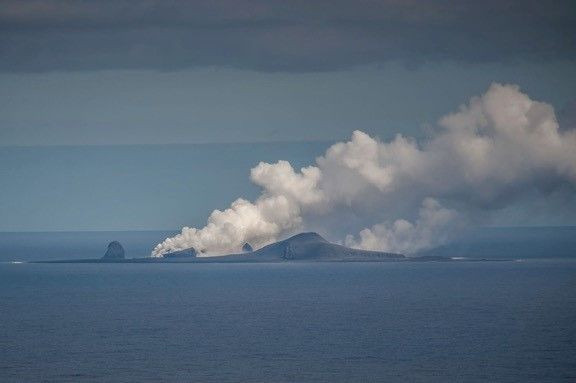Underwater Volcano Eruptions Very Common But Poorly Studied Threat To Marine Travel

Of all the volcanoes that erupt on the planet, most go unseen and unnoticed, simply because they take place thousands of feet under the surface of the world’s oceans. About four out of every five volcanic eruptions on Earth are believed to be occurring in the ocean, from where they can pose a threat to not just ships on the surface, but also possibly to aircraft.
Given how common they are, these submarine volcanoes are very poorly studied, largely in part due to their location. According to data from the United States Geological Survey (USGS), about 50 to 60 volcanoes erupt on Earth every year (of varying intensities), which averages out to about one eruption every week. And the National Oceanic and Atmospheric Administration (NOAA), in sharing a May 2009 video of an underwater volcano eruption (a rare kind of video), said scientists believe there are four times as many in the ocean, which amounts to about 200 to 250 eruptions every year.
But the volcano in the NOAA video is almost 4,000 feet below the surface of the Pacific, and a lot of submarine volcano systems are at an average depth of 8,500 feet. Even though they number several hundred thousands in number, their location makes them hard targets to study.
“It’s very difficult to study underwater volcanoes because it’s hard to put instruments in the water, especially long-term,” Gabrielle Tepp of the Alaska Volcano Observatory and USGS, said in a statement Monday, ahead of the 174th Meeting of the Acoustical Society of America (ASA), held Dec. 4-8, in New Orleans.
Since the eruptions occur underwater, they are only visible over the surface if an eruption was large enough for gas and ash to break through. Depending on the size of the volcano and the intensity of the eruption, a volcanic ash plume can rise high enough over the surface to endanger air travel. As the magma travels through the water, it cools down and a floating blanket of rocks — called a pumice raft, after the light rocks that result from the cooling magma — can damage ships.
“The ocean is a big place so it’s pretty unlikely that you’re going to have a situation where a ship haphazardly wanders over an eruption, but there are a few that have come close,” Tepp said.
That makes the ability to monitor these submarine eruptions important, and Tepp is focusing on that in her presentation at the ASA meeting. She is presenting data from observations of two volcanoes — Ahyi in the western Pacific Ocean and Bogoslof in Alaska’s Aleutian Islands. The last eruptions from both were recorded using seismometers as well as hydrophone arrays.
Ahyi’s 2014 eruption lasted about two weeks and occurred in repeated short blasts every few minutes. Bogoslof last erupted in August 2017, as well as in 2016, and both times, the eruptions were more sustained, occurring once every few days and lasting from minutes to hours at a time.
Cabled hydrophone arrays, actually deployed to detect underwater sounds that indicate secretive nuclear tests, are more accurate but also more expensive. Seismometers are good for monitoring eruptions remotely, because sound can travel for thousands of miles in water. But that means signals from eruptions on distant seismometers could also be misidentified as land volcanoes, earthquakes or even whale songs.
“Eruptions that create a loud enough sound, in the right location, can travel pretty far, even from one ocean to another. It makes you wonder, how many of these signals have we seen on distant instruments where nobody knew what they were, and it's a submarine volcano from halfway around the world?” Tepp said in the statement.
Along with colleagues from NOAA and USGS, Tepp recently deployed a hydrophonic array in the Northern Mariana Islands, where Ahyi is located. Data they will collect in summer 2018 will help them establish, depending on the amount of volcanic activity they find, if more monitoring of these submarine systems is needed.
© Copyright IBTimes 2025. All rights reserved.





















